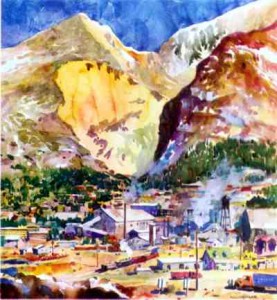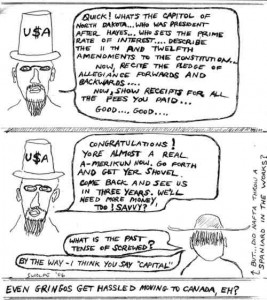Essay by David Feela
Rural Life – June 2006 – Colorado Central Magazine
IT’S LIKE A SOAP OPERA romance, this ongoing affection of mine for the old-style single or double-wide mobile homes, more commonly known as trailers.
To me, their appeal is strongest when I’m driving a gravel county road, and out in a field I see one, perched like an alien spacecraft on a few open acres. Or, I’m turning into the shaded niches of a well-worn trailer park, and it’s there, like a time machine, made of corrugated tin and glass. Sometimes it’s been repainted, not the bland manufacturer’s color from 30 years ago, but a fresh swath of purple, or yellow, or even turquoise and pink.
I should know: I’ve been parked since 1986 in a 1972 double-wide. I don’t know if it was new when it arrived on the property. It has no wheels, but when I have to climb into the crawl space beneath the mobile home, I can see where wheels were once mounted. There’s not much security down there, knowing that tornadoes have a sweet tooth for mobile homes. They twist trailers, then spit them out again, but it’s still a strange thought: A home could roll in like a tumbleweed and then roll back out again.
My unit is old enough to probably be illegal, manufactured during the era of pressed-board flooring and thin galvanized metal roofing. I’ve done the mobile home roofover (similar to a middle-aged male combover) and I flush with caution, realizing that a flood could turn my floor into waffle wood. Luckily, I live in a county that essentially believes: If you can drag it here, we can put up with it, which is why the hardier of these trailers should be preserved, designated as historic local treasures, of no lesser magnitude than those infamous bridges from that county in the Midwest.
The mobile home’s survival offers us a reminder of a time when a family’s housing ambitions were scaled back somewhat closer to, say, reality. No median sales price hovering around $207,000. No floor space with enough square-footage to hold a line dance for a football team. Mobile homes are proof that people could actually live with less, and did. I do now, and its constraint makes certain that I continue to do so.
Many others are still living that way, which is why I always slow down to admire these domestic time capsules. The vintage trailer is a covered bridge of sorts, spanning two banks: One side rooted with working people who could at one time own their own homes, and on the other side the current real estate market, where a lifetime of slowly diminishing mortgage debt is the glimmer at the end of the tunnel. I know some people consider yesterday’s trailers trash when compared to today’s modular, custom, set-on-a-slab, instant triple-wide castles. It is fair to say that a trailer does not have the investment potential of a ranchette with a massively imposing entrance gate. Maybe so, but I’d rather spend my days renovating the past than making payments on someone else’s future.
I’ll admit that much of a trailer’s styling, especially during the ’60s and ’70s, was a little too boxy, but it’s tough to argue with a classic trailer advertising slogan, “Home is where you park it.” For me, the idea of being self-contained has never lost its appeal.
HOUSING NEEDS ARE BASIC for all people, but available housing has taken a nasty turn away from anything approaching basic. In Pagosa Springs, for example, 15 homeowners in the Riverview Trailer Park have been evicted to make way for a 39-unit condominium development, with some units starting at a lofty $250,000. The same practice is happening all across the West as an economic boom in real estate sends trailer homeowners scurrying for cover. For our own protection as locals, before the real estate bubble pops, we’ll all be wearing condos, the only safe housing available.
Where’s a romantically inclined professional photographer when you need one? Maybe a lanky Clint Eastwood type, someone with an eye to show us the implicit beauty in an antiquated hallway without wheels. And even if the trailers look a little shabby by current standards, they embody a fiscal fantasy we’re in danger of forgetting. They stand for autonomy, at least as long as they’re allowed to stand.
David Feela is a contributor to Writers on the Range, a service of High Country News in Paonia, Colorado (hcn.org). He writes and teaches in Cortez.


